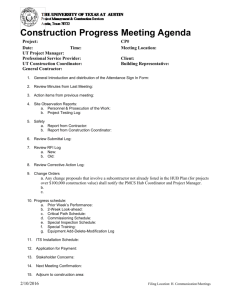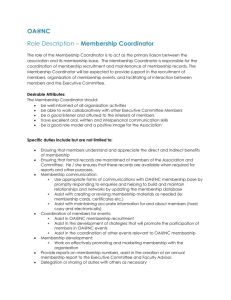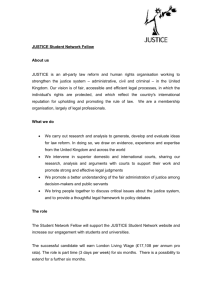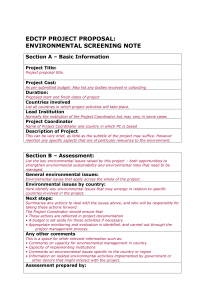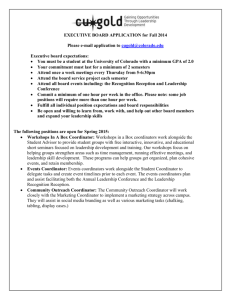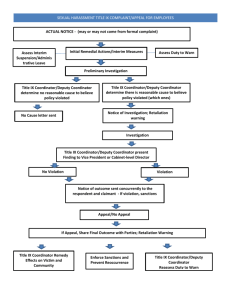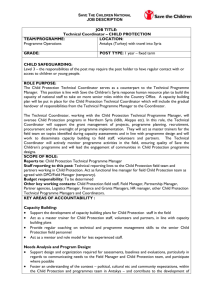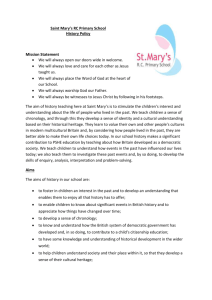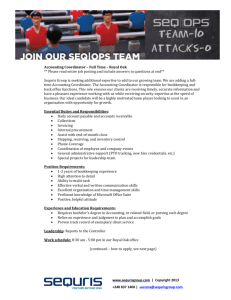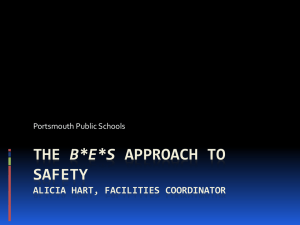Organizational Structure to Empower Your Team
advertisement
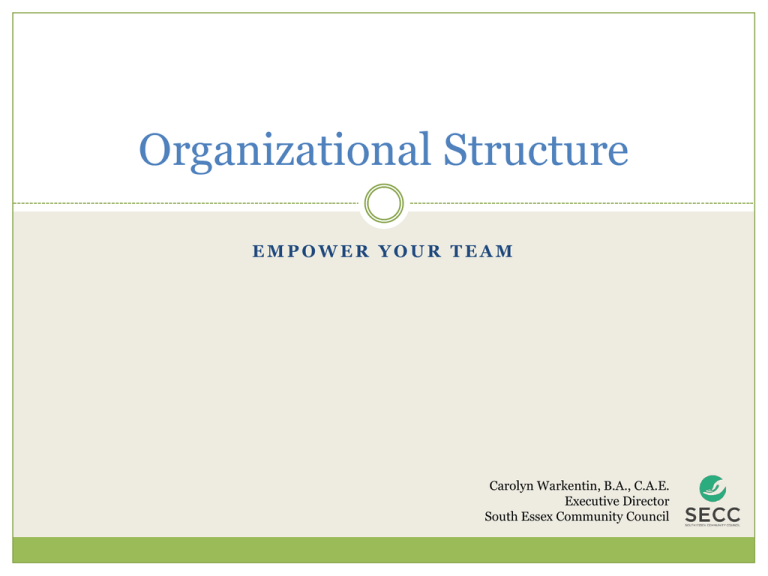
Organizational Structure EMPOWER YOUR TEAM Carolyn Warkentin, B.A., C.A.E. Executive Director South Essex Community Council “An empowered organization is one in which individuals have the knowledge, skills, desire and opportunity to personally succeed in a way that leads to collective organizational success.” Stephen Covey What is structure? Objectives Why is it important? How does structure & accountability empower staff? How does that benefit you as a supervisor or leader? What is Structure? What is structure? The way an organization arranges people and jobs so that its work can be performed and its goals can be met www.referenceforbusiness.com • A framework around which the organization is organized • Operating manual • Describes how leadership is chosen & decisions are made When examining structure… Understand the relationships between tasks, workflows, responsibility & authority. Tasks Workflow Responsibility Authority When was the last time you really looked at your org chart? FUNCTIONAL Organized into teams According to purpose or function of a specific job DIVISIONAL Larger companies Based on geography, products or services Each division is equipped with it’s own resources in order to function independently MATRIX Based on a combination of functional and divisional Teams of employees accomplish the work Form teams according to functions and services/products, strengths & competencies If done properly: Right people in the right positions Better utilize organization’s inventory of skills Helps leaders prioritize Staff make decisions In the end, it’s about BALANCE Your organizational design should take into consideration: • Strategy • Organizational size • Environment • Controls • Incentives http://www.youtube.com/watch?v=q0vvdjxfsF8 What is the purpose of your organizational structure? Does it align with your organization’s mission, vision and values? Why is that important? Does your structure allow for leadership development & creative thinking? Why is Structure Important? Quiz 1. Do you ever see people blaming others for what goes wrong in your organization? 2. Do you feel that people do not accept responsibility for what they do or how they do it? 3. Do you see people failing to take the initiative to report on their activities and their progress towards results? 4. Do people fail to “dive for the ball” when it gets dropped? 5. Do people “wait and see” if things will ever get better when serious problems engulf your organization? Quiz 6. 7. 8. 9. 10. Do you hear people saying they feel a situation is out of control and that they can do nothing to resolve it? Do people spend their time “covering their tails” just in case things go wrong? Do people seem to feel more responsible for their activity and effort than they do for their results? Do you hear people say, “It’s not my job or my department” and act as if they expect someone else to solve the problem? Do you feel that people display a low level of personal ownership and involvement when problems arise? Organizational Accountability Assessment, The Oz Principle, by Roger Connors, Tom Smith & Craig Hickman SECC’s Story Making the Connection Former Structure Executive Director Manager of Finance Department Coordinator Job Connect Front Line Staff Manager of Human Resources Department Coordinator CHSS Program Leader MOW Front Line Staff Program Leader Foot Care Front Line Staff Program Leader Transit Front Line Staff Department Coordinator Comm Ed Program Leader Adult Day Program Front Line Staff Program Leader HM, FV, SC Front Line Staff Program Leader Literacy Front Line Staff Program Leader Child Care Front Line Staff Department Coordinator Imm Services LINC Front Line Staff Program Leader* Front Line Staff Department Coordinator Employment Edge Front Line Staff Volunteer Services Program Leader Administrative Assistant Organizational alignment is linking strategy, culture, processes, people, leadership and systems to best accomplish the needs of a company. An aligned organization is one whose performance influences are mutually supportive and are focused on effective and efficient delivery of results. Why is structure important? Vision Flow of Communication Clear Reporting Relationships Decision Making Values Mission Rapid Response Achieving Goals Effective Use of Human Resources Evaluation of Performance— individual, organizational Strategic Plan How does structure & accountability empower staff? Barriers to Empowerment Formal structures make it difficult to act. Leadership discourages actions aimed at implementing the new vision. Employees understand the vision & want to make it a reality, but are boxed in. A lack of needed skills undermines action. Personnel & information systems make it difficult to act. Leading Change, by John P. Kotter New Structure—Phase 2 Executive Director Manager of Human Resources Manager of Finance Volunteer Services Program Leader Administrative Assistant Department Coordinator Employment & Training Program Leader Employment Connections Front Line Staff Program Leader Employment Edge Front Line Staff Department Coordinator Language & Settlement Department Coordinator CHSS Program Leader Literacy Front Line Staff Program Leader MOW Front Line Staff Program Leader Foot Care Front Line Staff Program Leader Transit Front Line Staff Program Leader Adult Day Program Front Line Staff Program Leader HM, FV, SC Front Line Staff Program Leader Settlement & CC Front Line Staff Program Leader Child Care Front Line Staff Program Leader LINC Front Line Staff SECC Annual Staff Staff Survey Mission Vision Values Strategic Plan—How are we doing? Did we get the priorities right? Staff Satisfaction—self improvement, happiness, personal performance, leadership opportunities, organizational culture, support at work I can make decisions in my day-today work activities about the decisions I make. 36%44% The strengths and talents of staff are valued. 21%30% Leadership is open to suggestions & values input from staff. 16%45% How does structure benefit you as a leader? Build trust Benefits Open communication Enhance listening skills Engaged staff=more productivity Innovation Have time to think and manage strategically Take your strategic plan from paper on the shelf to real results Be proactive Succession planning https://www.ted.com/talks/stanley_mcchrystal.html?source=email#.UkNjBfM YtfB.email Questions? Resources Functional, Divisional and Matrix Organizational Structures http://voices.yahoo.com/functional-divisional-matrix-organizational-structures-165219.html Leading Change, John P. Kotter “Organizational Alignment”, Donald T. Tosti and Stephanie F. Jackson http://pdf.aminer.org/000/246/967/it_and_organizational_alignment_impact_and_value.pdf The Oz Principle, Roger Connors, Tom Smith and Craig Hickman “The Secrets to Successful Strategy Execution”, Gary L. Neilson, Karla L. Martin and Elizabeth Powers. HBR’s 10 Must Reads On Strategy, 2011. TutorialsPoint--Organizational Structures http://www.tutorialspoint.com/management_concepts/organizational_structures.htm
